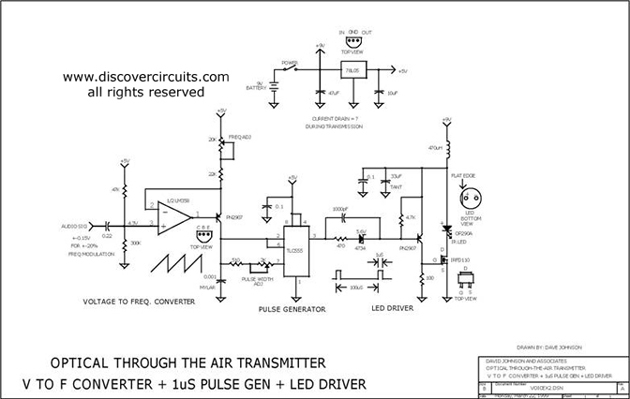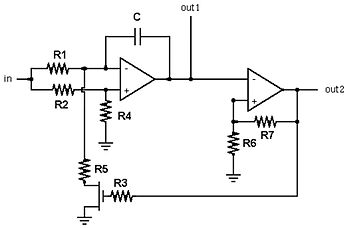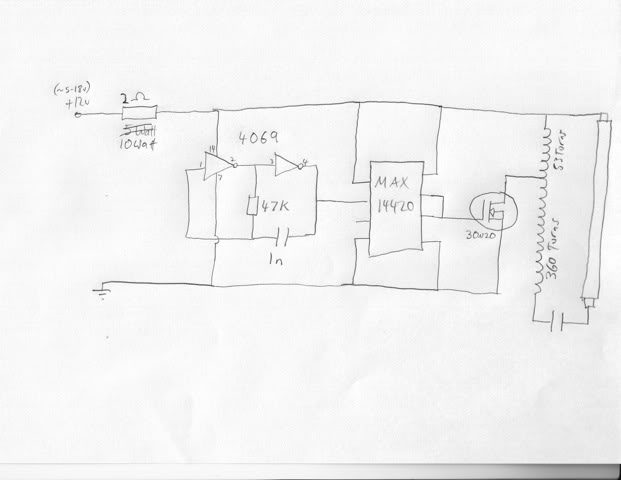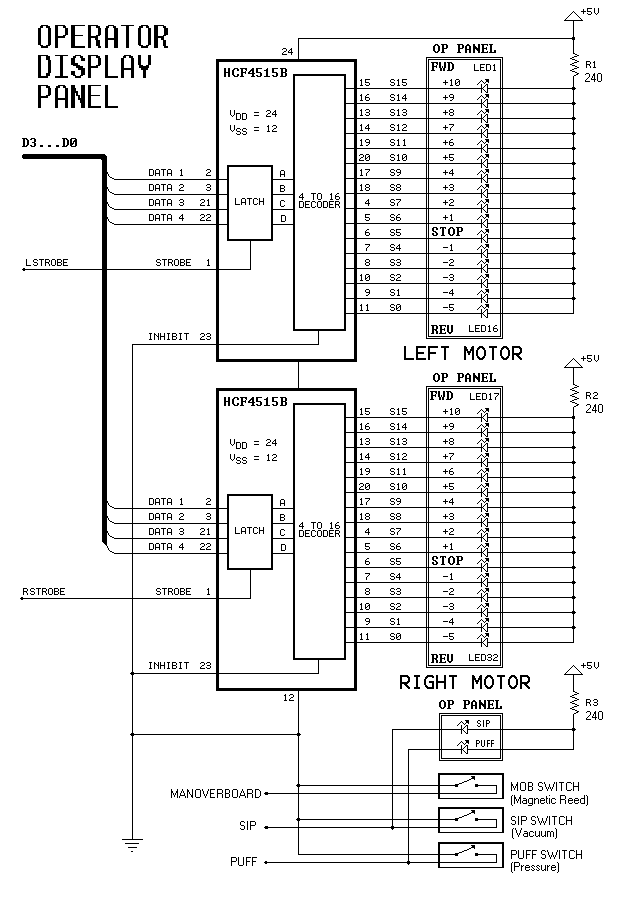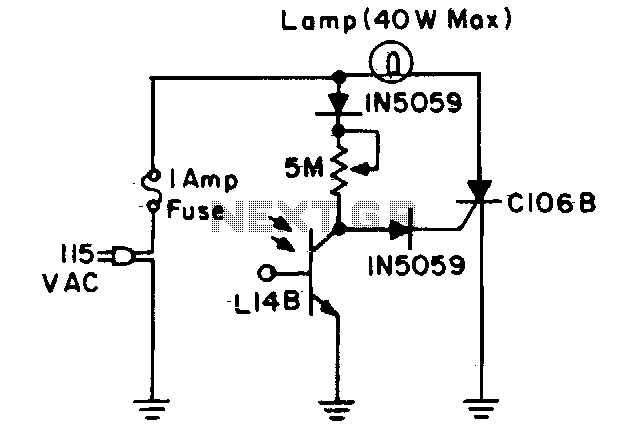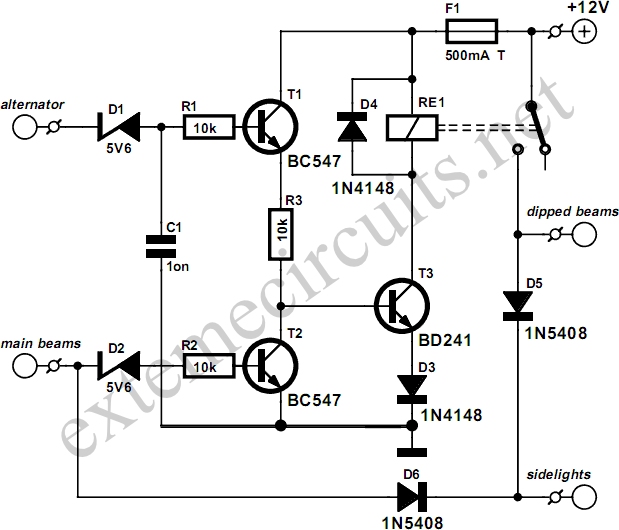
TPS61059 White LED Driver for Photoflash or Movie Light
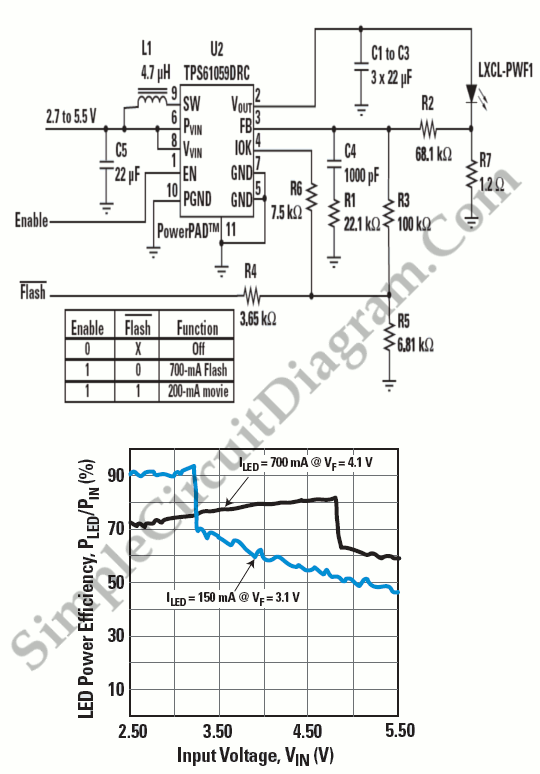
Manufacturers are beginning to utilize new high-power white-light LEDs to provide a photoflash function suitable for low-light conditions. These LEDs produce...
High-power white-light LEDs have emerged as a significant advancement in lighting technology, particularly for applications requiring enhanced illumination in low-light environments. These LEDs are designed to emit a broad spectrum of light that closely resembles natural daylight, making them ideal for use in photography, videography, and various consumer electronic devices.
In a typical circuit design for a photoflash application using high-power white-light LEDs, several key components are involved. The circuit generally includes a power supply, a driver circuit, the LED array, and control circuitry.
The power supply must be capable of delivering sufficient voltage and current to the LED array. For high-power applications, a constant current source is often employed to ensure that the LEDs operate within their specified limits, thereby maximizing efficiency and lifespan. This can be achieved using a buck converter or a linear regulator, depending on the desired efficiency and complexity of the design.
The driver circuit is essential for managing the operation of the LEDs. It may include components such as MOSFETs or transistors that control the current flow to the LEDs based on input signals from the control circuitry. This allows for precise modulation of the LED brightness and enables features such as dimming or pulsing, which are beneficial for creating the desired photographic effects.
The LED array itself consists of multiple high-power white-light LEDs arranged in parallel or series configurations, depending on the design requirements. Each LED should be equipped with appropriate heat sinking to dissipate excess heat generated during operation, as thermal management is critical to maintaining performance and reliability.
Control circuitry can include microcontrollers or dedicated LED drivers that facilitate communication with other components in the system, such as sensors or user interfaces. This circuitry can also implement various flash modes, such as burst or strobe, providing versatility for different photographic scenarios.
Overall, the integration of high-power white-light LEDs into photoflash applications represents a significant enhancement in lighting capabilities, delivering bright, high-quality illumination that meets the demands of modern photography and videography.Manufacturers are starting to turn to new high power to provide a photoflash function for these low-light conditions called white-light LEDs. These LEDs output.. 🔗 External reference
High-power white-light LEDs have emerged as a significant advancement in lighting technology, particularly for applications requiring enhanced illumination in low-light environments. These LEDs are designed to emit a broad spectrum of light that closely resembles natural daylight, making them ideal for use in photography, videography, and various consumer electronic devices.
In a typical circuit design for a photoflash application using high-power white-light LEDs, several key components are involved. The circuit generally includes a power supply, a driver circuit, the LED array, and control circuitry.
The power supply must be capable of delivering sufficient voltage and current to the LED array. For high-power applications, a constant current source is often employed to ensure that the LEDs operate within their specified limits, thereby maximizing efficiency and lifespan. This can be achieved using a buck converter or a linear regulator, depending on the desired efficiency and complexity of the design.
The driver circuit is essential for managing the operation of the LEDs. It may include components such as MOSFETs or transistors that control the current flow to the LEDs based on input signals from the control circuitry. This allows for precise modulation of the LED brightness and enables features such as dimming or pulsing, which are beneficial for creating the desired photographic effects.
The LED array itself consists of multiple high-power white-light LEDs arranged in parallel or series configurations, depending on the design requirements. Each LED should be equipped with appropriate heat sinking to dissipate excess heat generated during operation, as thermal management is critical to maintaining performance and reliability.
Control circuitry can include microcontrollers or dedicated LED drivers that facilitate communication with other components in the system, such as sensors or user interfaces. This circuitry can also implement various flash modes, such as burst or strobe, providing versatility for different photographic scenarios.
Overall, the integration of high-power white-light LEDs into photoflash applications represents a significant enhancement in lighting capabilities, delivering bright, high-quality illumination that meets the demands of modern photography and videography.Manufacturers are starting to turn to new high power to provide a photoflash function for these low-light conditions called white-light LEDs. These LEDs output.. 🔗 External reference
Warning: include(partials/cookie-banner.php): Failed to open stream: Permission denied in /var/www/html/nextgr/view-circuit.php on line 713
Warning: include(): Failed opening 'partials/cookie-banner.php' for inclusion (include_path='.:/usr/share/php') in /var/www/html/nextgr/view-circuit.php on line 713
